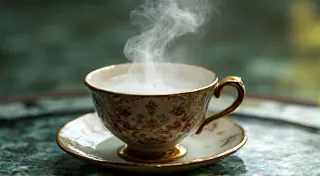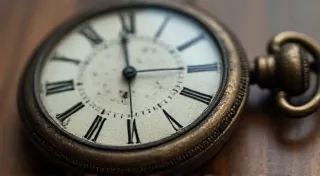Bellows of Breath: The Alchemy of Air and Music
There's a certain magic held within the antique accordion, a whispered history that hums beneath the keys and reeds. It’s more than just an instrument; it’s a time capsule, a vessel carrying echoes of dances, celebrations, and lonely evenings of heartfelt expression. And at the very heart of this captivating legacy lies the bellows—the instrument’s lungs, its breath, its soul.
My own journey with accordions began not with a purchase, but with an inheritance. My grandfather, a traveling musician in his youth, left behind a beautiful, though heavily worn, German concertina. It sat silent for years, a mournful presence in the attic. The bellows were stiff, cracked, and seemingly beyond repair. I remember the dusty smell, the weight of history pressing down. Little did I know, that silent instrument would become my teacher, my obsession, and a doorway to a fascinating world of restoration.
The bellows aren’t merely for inflating the instrument; they’re fundamentally intertwined with its tonal character. They’re the crucial element that drives the air across the reeds, coaxing the music to life. Understanding their importance is the first step in appreciating the alchemy of the antique accordion.
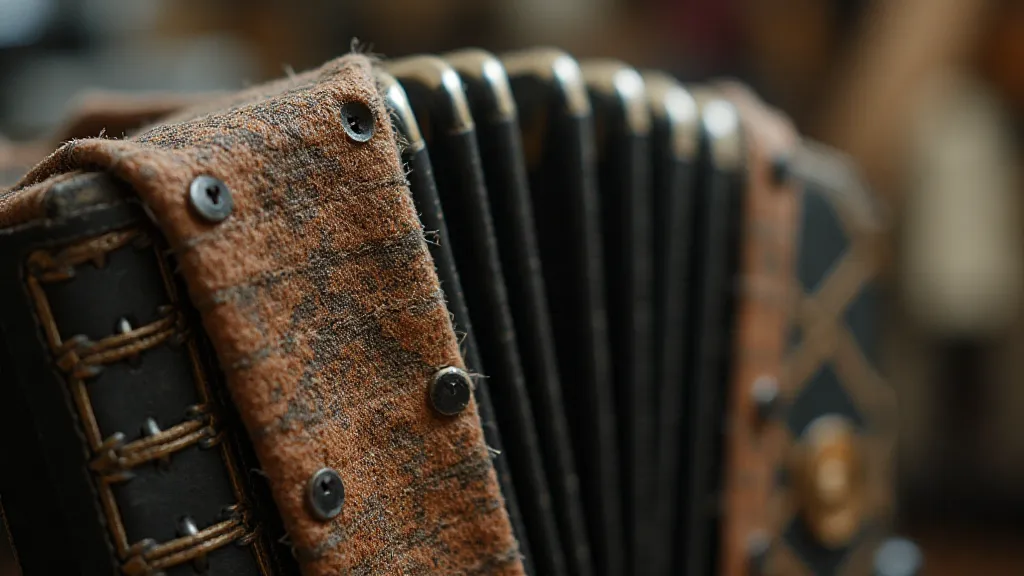
The Material Science of Breath
Historically, accordion bellows were constructed from a variety of materials, each influencing the instrument’s sound and resilience. Early models often employed layers of linen, canvas, or even animal hide, carefully stitched together to create a watertight and airtight seal. Later, as technology advanced, manufacturers began incorporating more durable fabrics like leather, treated cloth, and even synthetic materials. The number of layers – typically ranging from six to twelve – also played a crucial role; more layers generally meant greater resistance to air leakage and increased longevity, but also greater stiffness.
The choice of material impacted the bellows’ responsiveness. Lighter materials contributed to a quicker, more nimble feel, ideal for rapid-fire runs and intricate ornamentation. Heavier materials, on the other hand, offered a more robust feel and a potentially fuller, richer tone, particularly desirable in larger concertina-style accordions. Consider the influence of these material choices when considering the history surrounding these instruments – many a skilled clockmaker dedicated their talents to crafting the intricate reed blocks that accompanied these bellows, their precision a necessary complement to the craftsmanship of the bellows themselves. For those interested in the finer details, learning about The Clockmaker’s Precision: Dissecting the Intricate Mechanics of a Reed Block can illuminate the wider context of accordion construction.
A Delicate Balance: Pressure and Tone
The pressure exerted by the bellows is absolutely critical to the instrument’s tonal quality. Too little pressure, and the reeds will struggle to vibrate fully, resulting in a weak, breathy sound. Too much pressure, and the reeds might be forced beyond their designed range, causing them to become damaged or even sound harsh and distorted.
Experienced accordionists intuitively adjust bellows pressure to manipulate the instrument’s expression. A gentle, controlled squeeze can produce a delicate, intimate sound, while a more forceful push can generate a bolder, more commanding tone. This nuance, born from the interplay between the player and the bellows, is what elevates an accordion performance from technically proficient to truly captivating.
Restoration: Breathing Life Back In
Restoring antique accordion bellows is a delicate process, a dance between respecting the original craftsmanship and ensuring the instrument’s future usability. It’s not just about patching holes; it’s about understanding the bellows’ anatomy and rebuilding their functionality while preserving as much of the original material as possible.
The first step is always careful assessment. Identifying the type of fabric, the stitching technique, and the extent of the damage is paramount. Many older bellows are afflicted by dry rot, a pervasive issue that weakens the fabric from within. Careful cleaning with specialized leather cleaners or gentle detergents can sometimes restore some flexibility, but often complete replacement of affected sections is necessary. The effects of environmental factors, like humidity, can significantly impact the bellows’ condition, and understanding these interactions is key to successful preservation. Learning more about Resonance of Time: How Humidity Affects Antique Accordion Bellows and Sound can be invaluable for restorers.
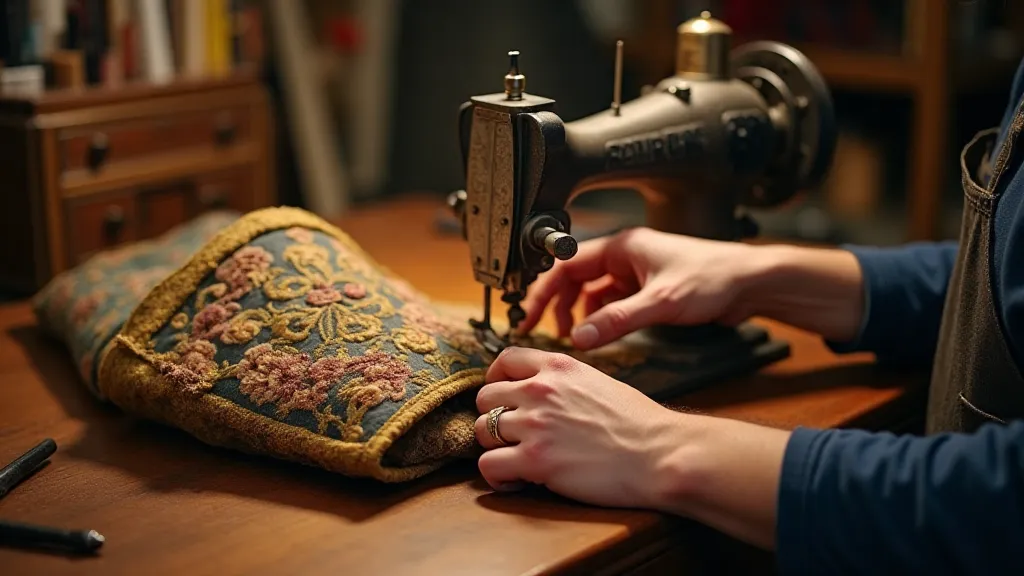
The replacement process involves a meticulous recreation of the original construction. New fabric – carefully chosen to match the original in terms of weight and texture – is cut into panels and painstakingly stitched together. Traditional stitching techniques, often utilizing linen thread and hand-sewing, are favored to maintain authenticity. Each stitch must be perfectly aligned to ensure an airtight seal and uniform bellows movement. The stories these instruments hold are often tied to specific musical traditions – echoes of forgotten polkas often resonate within their aging frames.
Beyond the stitching, the internal ridges and pleats of the bellows must also be addressed. These features provide structural support and influence bellows flexibility. Often, these features are damaged or flattened over time, and must be carefully reconstructed to ensure optimal bellows performance.
Collecting & the Echoes of the Past
Collecting antique accordions is more than just acquiring objects; it’s about safeguarding a cultural legacy. Each instrument carries a story – a silent testament to the lives of the musicians who once breathed into them, the dances they accompanied, and the audiences they entertained. Often, the origin of these instruments remains shrouded in mystery, with subtle markings offering the only clues to their past. A keen eye might discover hidden The Conservatory’s Secret: Discovering Unseen Markings on Antique Accordions, adding another layer of intrigue to the collection.
When acquiring an antique accordion, the condition of the bellows is a crucial factor. While cosmetic imperfections can be overlooked, significant bellows damage often indicates a more extensive restoration is needed, which can be costly and time-consuming. However, even heavily damaged instruments can be resurrected, offering a rewarding experience for the dedicated restorer and a chance to reconnect with a bygone era.
Look for instruments with unique features or markings that can shed light on their history. Manufacturer’s labels, handwritten inscriptions, or unusual construction details can provide valuable clues about the accordion’s origins and its former owner. These subtle details transform a simple instrument into a tangible link to the past.
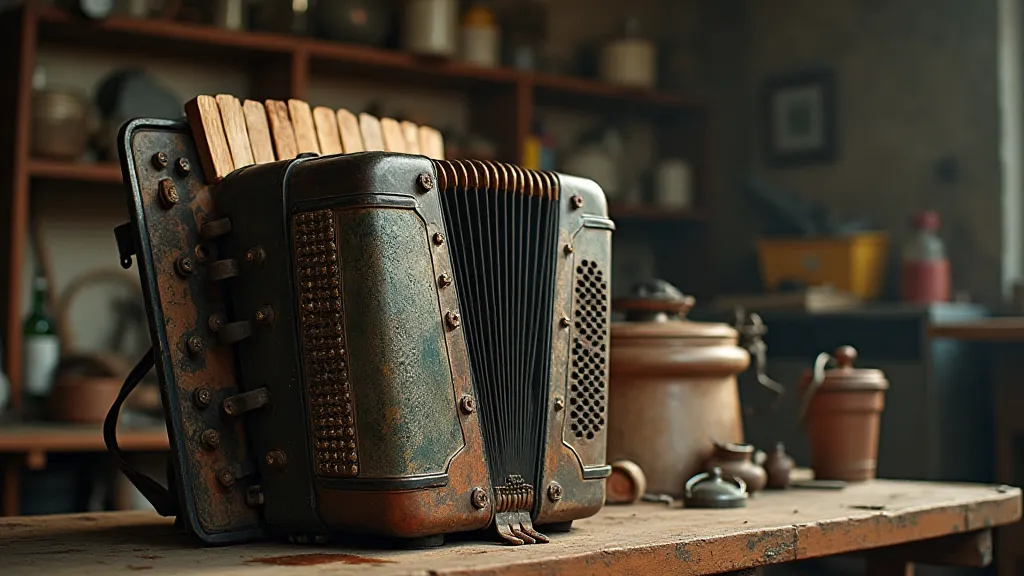
The Ongoing Legacy
The antique accordion is a testament to human ingenuity and artistry. The bellows, the instrument’s vital breath, is a symbol of the connection between performer and music, past and present. Restoring these instruments isn’t just about repairing damaged fabric and stitching; it’s about honoring the tradition, preserving the history, and ensuring that the echoes of the past continue to resonate for generations to come.
The next time you hear the joyful, complex sounds of an accordion, take a moment to appreciate the often-overlooked bellows—the unseen heart and lungs of this remarkable instrument. The preservation efforts surrounding these instruments are critical – their sounds carry so much more than mere notes, they transport us to bygone eras of celebration and shared experience. Maintaining a deep appreciation for these instruments ensures that their legacy endures, allowing future generations to experience the magic held within their bellows and reeds.
The ongoing exploration and preservation of these instruments necessitates not only technical expertise but also a profound respect for their cultural significance. The stories these instruments tell are invaluable, connecting us to the artisans who crafted them, the musicians who breathed life into them, and the audiences who were moved by their music. Let us continue to safeguard this legacy, ensuring that the bellows of breath continue to resonate with the sounds of the past, present, and future.

